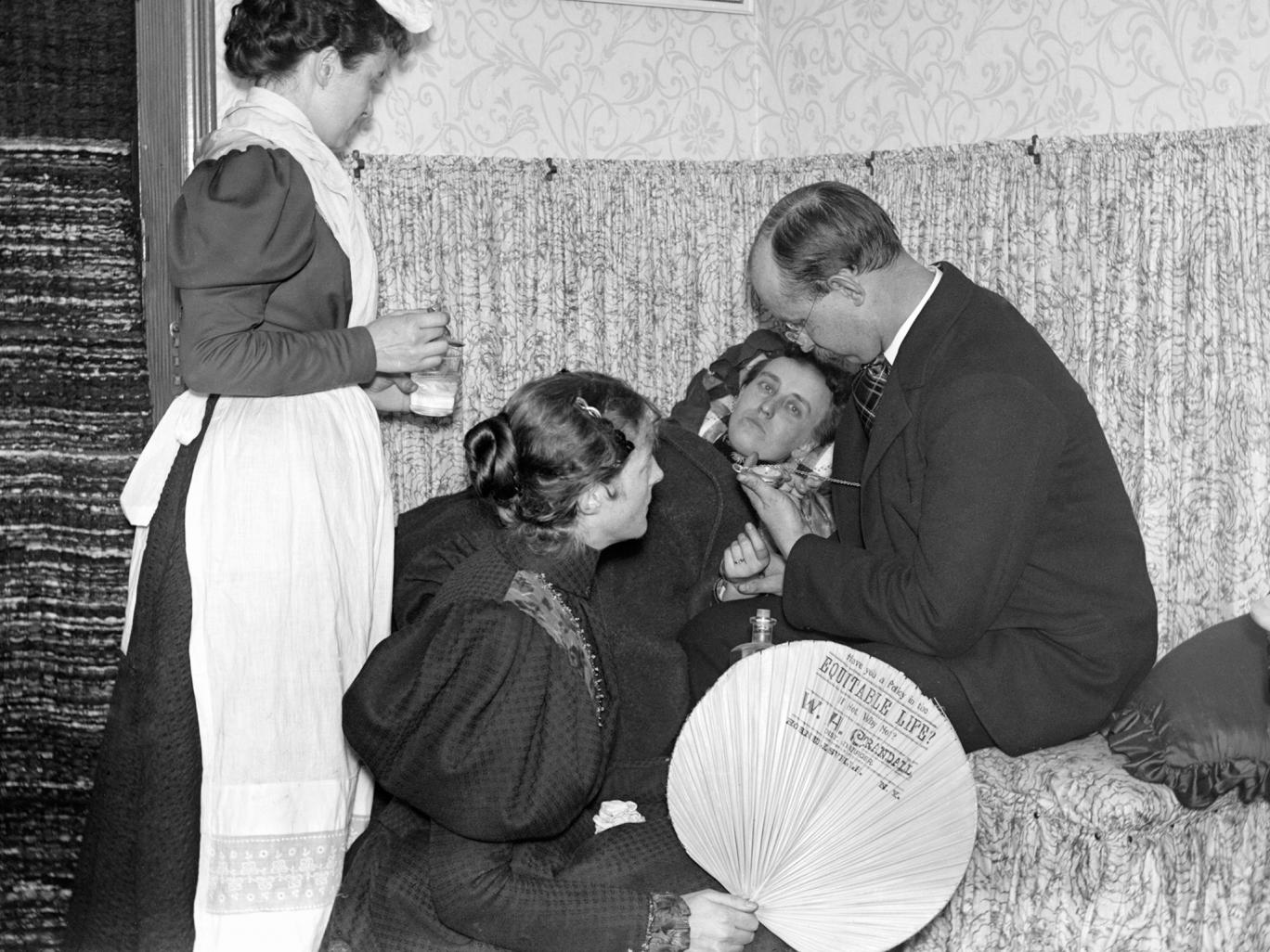
NHS statistics show that 7,366 people were admitted to hospital with a primary or secondary diagnosis of malnutrition between August 2014 and July this year, compared with 4,883 cases in the same period from 2010 to 2011 - a rise of more than 50 per cent in just four years.
Cases of other diseases rife in the Victorian era including scurvy, scarlet fever, cholera and whooping cough have also increased since 2010, although cases of TB, measles, typhoid and rickets have fallen.
Chris Mould, chairman of the Trussell Trust, which runs a nationwide network of foodbanks, said they saw "tens of thousands of people who have been going hungry, missing meals and cutting back on the quality of the food they buy".
"We meet families from across the UK struggling to put enough food on the table and, at the extreme end, you get people who are malnourished," he said. "We often see parents who are going without food so that they can feed their children, and these parents often struggle to afford enough nutritious food for their children, too. We don't think anyone should have to go hungry in the UK, which is why we're working to engage the public, other charities and politicians across parties to find solutions to the underlying causes of food poverty."
Dianne Jeffrey, who chairs the Malnutrition Task Force, an independent expert group, and charity Age UK, said the rise in hospital admissions for malnutrition was "deeply distressing".
"Older people and professionals often incorrectly assume that losing weight and having a reduced appetite are just a normal part of ageing," she said. "Much malnutrition is preventable, so it is totally unacceptable that estimates suggest there are at least one million older people malnourished or at risk of malnourishment. Cuts to social care mean many older people are being left to cope on their own."
The figures from the Health and Social Care Information Centre show that in worst-affected areas - Devon, Cornwall and the Isles of Scilly - 2.4 people out of every 100,000 were admitted to hospital with a primary diagnosis of malnutrition.
Admissions for malnutrition nationally were highest among men in their sixties, followed by those aged over 80, and among women in their fifties, followed by those in their forties. Patients admitted with gout have also increased by 60.5 per cent, from 65,387 from August 2010 to July 2011 to 104,972 in the same period in 2014 to 2015.
The Fabian Society has accused the Government of lacking a strategy to combat food poverty and said proposed tax-credit cuts could become a bigger driver of food insecurity than low wages.
Dave Prentis, general secretary of Unison, said: "Unless the Government backs down over tax-credit cuts, we are likely to see the number of malnourished people climb."
The Department of Health said: "There is no level of malnutrition that is acceptable - though these figures may well be in part due to better diagnosis and detection by our health staff and carers. So we are working with Age UK on a £500,000 project to tackle this issue through schemes such as our School Food Plan and free fruit and veg scheme, we are aiming to get everyone into healthy food habits from an early age."
Comment: In other words, completely disregard the facts about the impact of austerity measures and deflect the issue, essentially just 'Let them eat cake': Poorest UK families to bear the brunt of the governments newest austerity measures.
Tuberculosis in London: Worse than Iraq
Parts of London have higher rates of tuberculosis than Rwanda or Iraq, according to a report by the London Assembly.
One in three boroughs in the capital suffer from high rates of TB, with more than 40 cases per 100,000 people and some wards in Brent, Ealing, Harrow, Hounslow and Newham have rates of more than 150 per 100,000. Prisoners, homeless people, substance abusers and migrants are particularly at risk, according to the report.
The assembly has called on London Mayor Boris Johnson to educate Londoners about TB. While the rate of infection among UK-born Londoners has risen, it has fallen among those born abroad. The borough with the highest rate was Newham, with 107 cases per 100,000 people.
Figures from the World Health Organisation in 2013 showed that the rate in Rwanda was 69, while in Iraq it was 45. However hospital admissions for TB across England have dropped since 2010. Some 7,528 people were admitted with TB from August 2010 to July 2011, compared with 5,457 cases in the same period from August 2014 to July 2015.



Comment: In a country where British Conservative MP's laugh at stories of starving British families, studies confirm that the obscene, unnecessarily harsh austerity measures they adopt are having devastating repercussions among those most vulnerable, as people go hungry, forcing dependency on food banks.